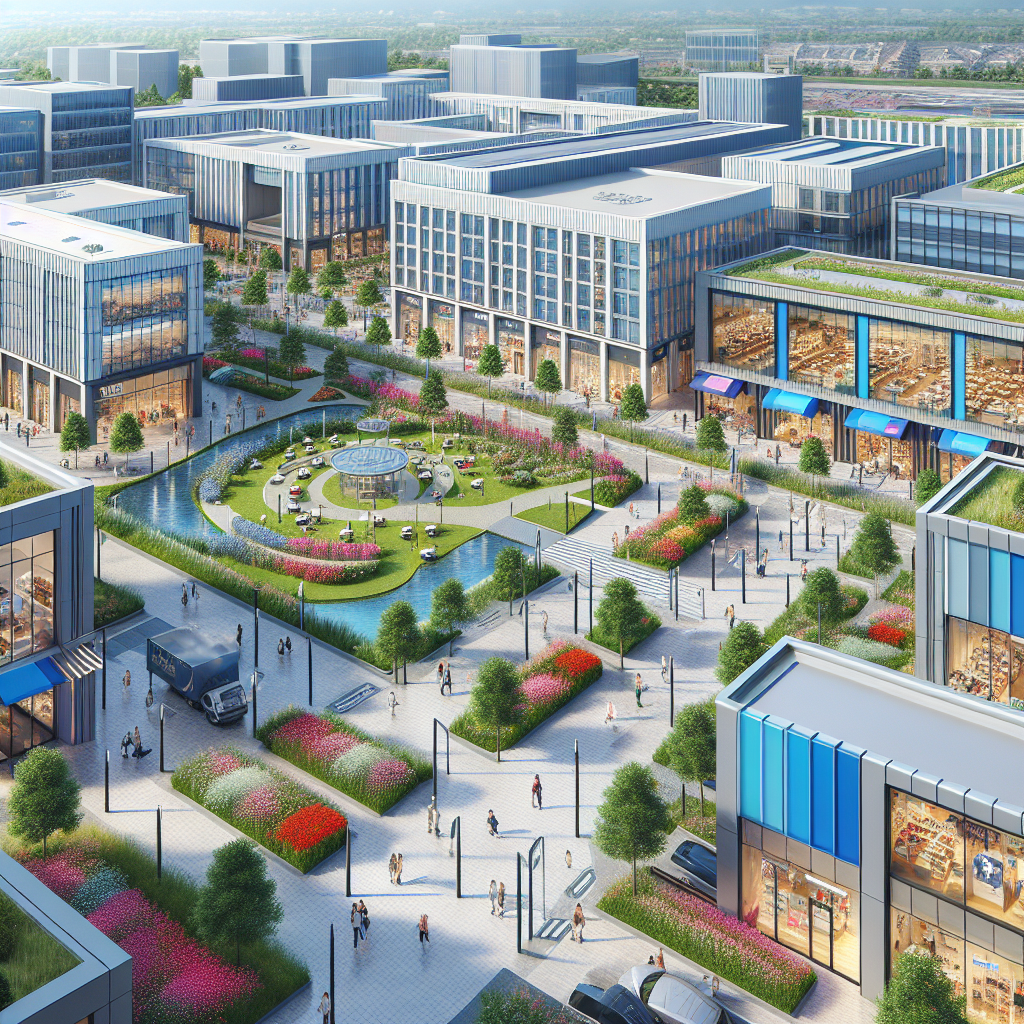The term ‘commercial landscape’ encompasses the planning, design, installation, and maintenance activities that are executed in various outdoor areas of businesses, institutions, and public spaces. Understanding the essentials of commercial landscaping is crucial for professionals aiming to create functional, aesthetically pleasing, and sustainable environments. These spaces not only represent the organization’s brand but also contribute to the well-being of employees and the community.
Essential components of commercial landscaping include hardscape design, such as walkways and patios, softscape elements like plants and grass, irrigation systems for water efficiency, and lighting to enhance safety and aesthetics after dark. Commercial landscape meaning also extends to seasonal color displays and eco-friendly practices that promote biodiversity and conservation.
Professional landscapers must understand local climate conditions, soil types, and plant hardiness to ensure that their designs are both beautiful and resilient. Moreover, commercial landscapes can serve as a key differentiator in the market, attracting customers and increasing business value. Contact us today to discover how our landscaping services can transform your property!
Key Components of a Commercial Landscape
A commercial landscape is a symphony of various elements that, when combined, create an inviting and functional space. The key components of a commercial landscape are critical to achieving the desired balance between aesthetics and utility. Hardscape elements, such as pathways, retaining walls, and water features, form the backbone of the landscape, offering structure and defining spaces within the area.
Softscape features should harmonize with the hardscape, including a selection of trees, shrubs, flowers, and grasses that add color, texture, and life to the property. The choice of plants is essential for year-round visual interest and should be suited to the local climate and soil conditions. Additionally, an efficient irrigation system is indispensable for maintaining the health and vibrancy of the softscape without wasting water.
Proper lighting not only ensures safety after dark but also highlights architectural and natural features, creating an attractive ambiance. Lastly, signage and site furnishings such as benches, trash receptacles, and bike racks add to the functionality and user-friendliness of the commercial landscape. Each of these components requires careful consideration and a strategic design approach to achieve a cohesive and impactful commercial landscape.
The Role of Commercial Landscaping in Urban Development

Commercial landscaping plays a pivotal role in urban development, extending far beyond mere aesthetic enhancement. It serves as a hallmark of urban planning, contributing to environmental sustainability, economic vitality, and social well-being. In densely populated urban environments, commercial landscapes can act as green lungs, improving air quality and providing natural cooling effects which combat the urban heat island phenomenon.
Moreover, thoughtfully designed commercial landscapes encourage outdoor activities, promote healthier lifestyles, and foster community interactions. These spaces often become hubs for social engagement, hosting events and gatherings that enhance the vibrancy of urban life. Well-executed commercial landscaping also contributes to property values, making businesses and residential areas more attractive to investors and potential residents alike.
Another significant aspect is the creation of wildlife corridors within the urban fabric, supporting biodiversity and offering a sanctuary for local fauna. The integration of stormwater management systems within commercial landscapes further underscores their role in sustainable urban development, aiding in water conservation and reducing runoff pollution. Ultimately, commercial landscaping is not just about beautifying spaces; it is integral to the creation of sustainable, functional, and thriving urban areas.
Design Principles for Commercial Landscaping Projects

Embarking on commercial landscaping projects requires a keen understanding of fundamental design principles that govern the creation of functional and appealing outdoor spaces. Balance is paramount, ensuring that the visual weight of the landscape components harmonizes with the surrounding architecture. This balance can be symmetrical, mirroring design elements on either side of a central axis, or asymmetrical, which involves different elements that still achieve a sense of equilibrium.
Unity and harmony are achieved when all components of the landscape design complement each other and create a cohesive look. Consistency in the use of materials, colors, and plant types helps to establish a theme that ties the entire space together. Proportion, another critical principle, dictates the size relationship between different parts of the landscape and the overall scale relative to nearby structures. It ensures that features like trees, hedges, and walkways are in line with the size of the space.
Attention to color theory is also essential. Colors can influence mood and perception, with warm colors inviting interaction and cool colors creating a more tranquil environment. Texture and form add visual interest and depth, with a variety of plant shapes, sizes, and surface qualities engaging the eye and enhancing the landscape’s tactile experience. Finally, the principle of simplicity can prevent overcomplication, ensuring that the design remains clear, uncluttered, and easy to maintain.
Maintenance Strategies for Commercial Landscapes

Effective maintenance strategies are essential for preserving the beauty and functionality of commercial landscapes. A proactive approach to landscape maintenance not only enhances curb appeal but also extends the longevity of the plant materials and hardscape elements. A cornerstone of good maintenance practice is regular inspection to identify issues such as pests, diseases, and irrigation problems before they escalate.
Developing a seasonal maintenance plan is vital for adapting to the changing needs of the landscape throughout the year. This includes spring fertilization, summer irrigation checks, autumn leaf removal, and winter protection. Pruning and trimming should be done at times that are best for the plant species involved, promoting healthy growth and preventing overgrowth that can compromise the landscape’s design.
Investing in mulching can significantly reduce the amount of water needed for plantings and also suppress weed growth, contributing to a neater appearance. Integrated Pest Management (IPM) approaches help manage pests with minimal environmental impact. Additionally, implementing energy-efficient lighting and irrigation systems can lower operational costs and increase sustainability.
Lastly, it’s imperative to ensure that the landscape maintenance team is well-trained and equipped with the right tools. This enables them to execute tasks efficiently and with precision, ensuring that the commercial landscape remains a testament to the property’s professionalism and attention to detail.
Assessing the Economic Impact of Commercial Landscaping

The economic impact of commercial landscaping is both profound and multifaceted. A well-designed and maintained landscape can significantly increase the property value, sometimes by as much as 15-20%. This is because attractive landscaping is often interpreted as a sign of a well-managed property, which can attract potential buyers and tenants. Additionally, it can enhance the rental rates of commercial spaces, as businesses are willing to pay a premium for locations that offer a high aesthetic appeal and a welcoming atmosphere for their employees and customers.
Commercial landscaping also contributes to the local economy by creating jobs and supporting businesses that specialize in horticulture, construction, and maintenance. It can even have a positive effect on consumer behavior; studies have shown that consumers are more likely to shop longer and spend more money at establishments with high-quality landscaping.
Furthermore, sustainable landscaping practices can lead to cost savings over time through reduced energy consumption and lower water usage. The use of native plants and efficient irrigation systems are key components of an eco-friendly landscape that can reduce maintenance costs and improve a property’s green credentials.
For property owners looking to harness these economic advantages, professional landscaping services are indispensable. Contact us today to discover how our landscaping services can transform your property, enhance its value, and contribute to your long-term economic success.
